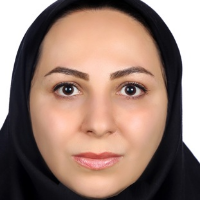Analyzing of Creating a Livable Smart City in the City of Tabriz
Smart cities provide better transportation and ease of access, improved social services, urban sustainability, and a better quality of life for their residents. Like most big cities in the world, Tabriz city faces complex problems in the field of population density, air, and noise pollution, providing transportation services, and social and economical housing. Therefore, the formation of a smart city based on smart criteria in the city of Tabriz based on big data can be a great help for the government and city managers in determining the smart city strategy. The reason for the lack of success in the implementation of the smart city is the need for more awareness of the smart city and its management and the effective factors in its formation. Therefore, it is very necessary and vital to identify the effective factors in the formation of the smart city of Tabriz at this time. The purpose of this study is to identify the living conditions in a smart city and its characteristics through the perception of residents (young people) of Tabriz based on a developed model. The criteria for choosing the city's young class is because young people play a critical role in the future of society, they play a major role in the process of creating a more stable and resilient city, and information and communication technology (ITC), which allows communities to adapt to the conditions that have arisen, grown and developed even when faced with difficulties.
The work method is quantitative-qualitative and includes two parts. A survey was conducted based on the theoretical aspects obtained in the review stage of the theoretical foundations and background of the research. The second was based on field studies using a researcher-made questionnaire. In the questionnaire, a five-point Likert spectrum scale was used according to the level of agreement or disagreement of the respondents (1 completely disagree; 5 completely agree), which were part of the structure of the theoretical model. Therefore, to ensure the achievement of a high-quality field to achieve the goals proposed in this study, a systematic literature review method was used, a well-known scientific research method that has been accepted by researchers in various fields. It is a research strategy that defines, from selection to analysis, all the steps necessary to conduct a reliable and accurate bibliographic review. In this research, the articles from authoritative databases were examined. According to these selected articles, the articles that did not belong to scientific journals were excluded. Therefore, after identifying the gap in the theoretical framework and considering the studies conducted on all aspects of the smart city, a study Exploration was conducted through the development of a bibliographic review with a qualitative approach as well as field research with a quantitative approach. The statistical population of the research includes the population of Tabriz city, 1593373 people. The sample size was 384 people based on Cochran's formula. A confirmatory factor analysis (CFA) and a multi-group confirmatory factor analysis (MGCFA) were chosen for the quantitative analysis. Then, a correlation matrix was used using Partial Least Square Structural Equation Modeling (PLS-SEM), and its data was analyzed by Smart PLS software. Microsoft Excel and IBM SPSS software were also used for descriptive analysis.
The results of significant path analysis showed that all hypotheses are confirmed, as there was no significant difference between the main sample and the sub-samples produced by the statistical technique with critical limits for the t-Student test. When the operational definitions of "characteristics of smart cities" were analyzed, the path analysis of "characteristics of smart cities and the environment" was accepted with the highest β in both samples: the first sample (β=0.822) and the second example (β=0.793). This relationship is related to using information and communication technology to better protect and manage environmental resources and related infrastructure and to create more sustainability. In this context, the technologies developed in the city of Tabriz are considered factors that drive the efficiency of the city and enable the optimal use of resources and reduce environmental impacts, for example, by improving air quality. Citizens of a large metropolis like Tabriz (based on the selected sample) face daily problems such as roadblocks, poor public services, and poor sanitation, as well as air, water, and street pollution, which create disturbances and concerns that require practical solutions. On the other hand, according to the operational settings of smart city features in Tabriz city, the relationship between smart city path analysis features and the economy was the relationship that had the lowest value among all relationships in both sample 1 (0.627) and sample 2 (0.556) and confirmed that the smart city is an innovative urban ecosystem that is characterized by the extensive use of information and communication technology in the management of its resources and structure. However, it is necessary to broaden the concept of the economy with access and information to the people who participated in this survey so that they can be more active in issues related to the spirit of innovation, entrepreneurship, productivity, labor market, international integration, and ability to change the company. Moreover, a critical aspect of this structure is related to competition, so it is necessary to invest in the creation of these innovative environments (for example, rooms or co-working spaces) so that one can strengthen the interaction with young people. The results showed that in this model, it was possible to adapt all the features of smart cities. The characteristic of the environment was the case that showed the most relationship in contributing to city efficiency and reducing environmental effects on the quality of cities, and the characteristic of the economy was the case that showed the least relationship.
Finally, it is argued that overall efficiency in all features depends on citizen engagement in public life innovation processes. The smart city is different and useful from other solutions due to its success in the field of innovation, basically depending on the collaborative process that encourages the discovery and creation of ideas in developed environments.
- حق عضویت دریافتی صرف حمایت از نشریات عضو و نگهداری، تکمیل و توسعه مگیران میشود.
- پرداخت حق اشتراک و دانلود مقالات اجازه بازنشر آن در سایر رسانههای چاپی و دیجیتال را به کاربر نمیدهد.



